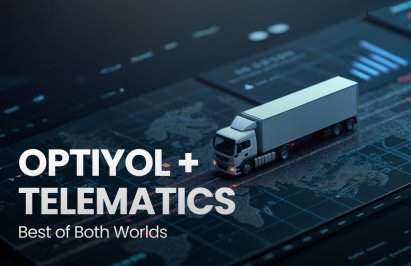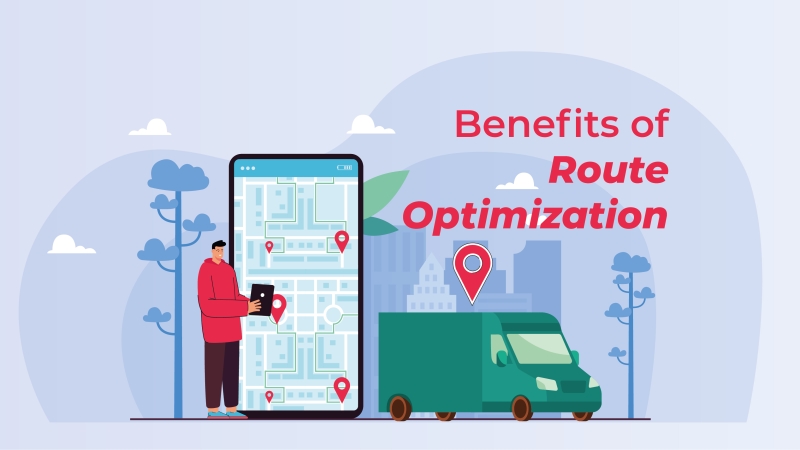
April 27, 2022


We live in a very different world than we did a few years ago. With so many changes in such a short time, we’re seeing all aspects of life be affected.
Commerce is definitely a sector that has transformed since the pandemic. We now live in a world where everything can be shipped to us, including fresh produce, customized gifts, hot doughnuts, and monthly cosmetic subscriptions.
Everybody is getting everything delivered it seems. In fact, FedEx Express alone reported 6.6 million packages shipped in 2021!
So delivery companies have been stretched to their limits. With anything that sees rapid change, there are challenges, and people are trying to find the quickest, most effective solutions. And last-mile delivery is no exception.

Route optimization is the process of automating route planning through logistics, based on data from customer orders, available fleets, road distances, travel times, and more. With route optimization, companies can easily determine the right selection of fleet, allocation of orders, and sequencing of visits.
When it comes to ensuring smooth last-mile operations, there are various challenges companies face at every step. However, route optimization can ease the load of last-mile bottlenecks and even solve common challenges of delivery.
Let’s look at how the benefıts of route optimization can solve the most common bottlenecks of last-mile delivery.
With such a dramatic spike in delivery demands, companies are trying to find a balance between meeting the increased needs and ensuring a sustainable supply chain.
This should be a priority for companies because customers are increasingly looking for how their buying process affects the environment. One of the hardest parts of this challenge is the CO2 emissions produced by delivery trucks.
Growth in last-mile deliveries indicates a larger carbon footprint. And without proof of a green last-mile delivery, companies are bound to lose the new eco-conscious generation.
It’s no longer optional for companies to create sustainable habits, but how can delivery be realistically sustainable?
A route optimization solution can completely shift the environmental impacts of last-mile deliveries.
Route optimization algorithms provide efficiency with last-mile logistics concerning route distance and fleet selection. And with this efficiency, resources are minimized, including fuel needed for mileage. So carbon emissions of delivery trucks are greatly minimized.
Through more efficient and flexible planned routes, delivery can become a more eco-friendly operation.
Another challenge that companies are facing is high operating costs. With fleet management and order allocation, resources may be wasted and cost companies unnecessary amounts of money.
The mileage spent by delivery trucks is a large cost that companies face, especially when trucks are forced to backtrack or revisit locations due to missed deliveries or route planning problems.
When there are hiccups in delivery, more mileage is driven, which directly equates to more fuel costs to your company.
Optimized route management software takes into account everything in your delivery process and adjusts for a flawless operation.
This prevents drivers from having to visit a house more than once, backtracking, or spending time waiting. In fact, it can save 15-25% in mileage costs.
Fleet size is also considered, so route optimization software can create truck-specific routes based on load and truck size. With dynamic fleet selection and order allocation, route optimization results in 5-10% savings in fleet size.

Time is the main focus when it comes to successful delivery services. Manually planning routes is extremely time-consuming.
Companies also face time loss when it comes to late or missed deliveries. Without optimized route planning, so much unnecessary time is spent waiting or revisiting delivery points.
There are also unexpected events that can throw off a whole delivery schedule. All of these setbacks cost time, which costs money.
One way to increase efficiency in delivery management is to eliminate the time-consuming manual planning process. Optimized route planning replaces wasted time and stress with efficiency and ease.
Route optimization automatically finds the most efficient delivery routes by taking into account every stage of the operation, including last-minute changes and potential setbacks.

Customer satisfaction is a crucial challenge for delivery companies, which are already being tested with demand and time constraints.
Delayed and failed deliveries can disturb your customer retention. Also, every customer is different, so trying to meet each customer’s personal demands is challenging to say the least.
Lastly, sustaining effective communication with customers can be hard to achieve with manual delivery management.
Ensuring a speedy and flawless delivery experience is essential to customer service. Optimized route planning is the most effective way to ensure efficiency, so you are much less likely to have late deliveries.
With real time delivery management, you can provide accurate information to your customers and they can even track their package’s location and estimated arrival time.
Having the option to contact the driver and access the location of their packages are game-changers in customer satisfaction.
Some technologies even allow customers to make change requests and personal demands, such as delivery place/time, recipient, and additional notes. This type of personalization is exactly what customers appreciate and what encourages retention.
It’s clear that optimized route services are the only way to ensure an efficient, green, and flawless delivery experience. However, not all route optimization services are the same.
Optiyol cloud-based route planning software is here for you with its comprehensive data model that feeds flexible and tunable algorithms for each operation, specially designed to enable you to improve delivery management processes seamlessly.
Check out Optiyol and optimize your last-mile delivery process today.